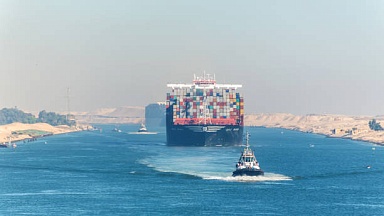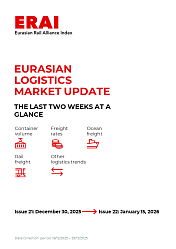North-South Corridor
The International North-South Transport Corridor (INSTC) is a significant strategic project aimed at creating alternative routes for Russia’s foreign trade in the current geopolitical situation. It connects Russia with India and the Persian Gulf countries through the territories of the Caucasus and Central Asia.
Current Situation and Economic Significance
In recent years, the development of trade relations between Russia and Asia and Africa has become a priority. In 2023, Russia’s exports decreased by $167.4 billion, mainly due to reduced supplies to Europe. However, imports from Asian and African countries through the North-South Corridor increased by 11.7%, partially offsetting the decline in trade with European countries.
The North-South Corridor comprises three main branches: western, eastern, and trans-Caspian. Each branch has its own unique features and development prospects.
Commodity Structure and Cargo Flow Dynamics
The main types of goods transported through the North-South Corridor include grain, coal, ferrous metals, chemical products, and others. In recent years, there has been a significant increase in cargo volumes. In 2023, the total volume of transport increased by 18%, reaching 22.6 million tons. Maritime transport grew by 55%, amounting to 5.5 million tons, comparable to the volumes of road transport.
The growth in cargo volumes is due to the increased trade relations with Asian and Middle Eastern countries as well as active investments in the corridor’s infrastructure.
Infrastructure Challenges and Solutions
Despite positive trends, the development of the corridor faces several infrastructure challenges. One of the key issues is the insufficient capacity of railway routes, especially in sections passing through mountainous areas and regions with difficult natural conditions. Active work is being carried out to expand the infrastructure to overcome these challenges. As part of Russia’s railway transport development strategy until 2030, the North-South Corridor occupies a priority place. Plans include the construction of new railway lines, modernization of existing routes, and the expansion of port and terminal capacities.
Strategic Importance and Prospects
The North-South Corridor holds strategic significance for Russia. It opens new opportunities for trade with India, Iran, the Persian Gulf countries, and Central Asia. In the context of sanctions pressure and the need to diversify foreign economic relations, this route becomes an important tool for strengthening Russia’s positions on the international stage. In the long term, the North-South Corridor can become a key element in the system of international transport routes, ensuring stable and efficient connections between Europe and Asia.
Thus, the International North-South Transport Corridor (INSTC) is a crucial part of Eurasia’s transport framework. By connecting with most of the east-west Eurasian transport routes (China-EU), particularly the Eurasian transit route through Kazakhstan, Russia, and Belarus, the north-south meridional INSTC can play a significant role in forming «new logistics» and restoring international transport and logistics chains after the disruptions caused by the breakdown of traditional supply chains in 2022-2023.
The original is available in Russian
«Коридор ‘Север-Юг’ новые возможности для внешней торговли России.» 2024. Росконгресс. Фонд Росконгресс. 2024. https://roscongress.org/materials/koridor-sever-yug-novye-vozmozhnosti-dlya-vneshney-torgovli-rossii....


